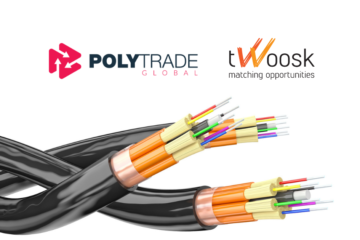
In the realm of telecommunications, optical transceivers play a pivotal role, enabling the seamless transmission of data across fiber optic networks. These devices, which convert electrical signals into optical signals and vice versa, are essential for maintaining efficient communication over long distances. For telecom professionals, understanding the intricacies of optical transceivers is crucial for optimizing network performance and ensuring compatibility with various systems and equipment. In this guide, we’ll delve into the critical aspects of optical transceivers, offering practical insights and examples to illustrate compatibility, form factors, and data rates, empowering professionals to navigate the complexities of optical networking effectively.
Compatibility: Ensuring Seamless Integration
- Interface Compatibility: When upgrading networking equipment, such as switches or routers, it’s essential to choose optical transceivers that align with the interface standards used in your network. For example, if your network infrastructure supports Gigabit Ethernet, selecting Gigabit Ethernet-compatible transceivers ensures seamless integration and optimal performance.
- Protocol Compatibility: Consider a scenario where you’re deploying a new network application that relies on specific communication protocols, such as SNMP for network management. Choosing optical transceivers that support these protocols is critical for ensuring compatibility and enabling efficient communication between devices.
- Vendor Compatibility: Opting for optical transceivers from reputable manufacturers is essential for ensuring compatibility with your existing equipment. For instance, if your network infrastructure consists of Cisco switches, selecting transceivers certified by Cisco helps minimize compatibility issues and ensures reliable operation.
Form Factors: Choosing the Right Fit
- Small Form-factor Pluggable (SFP): In environments where space is limited, such as small office settings or edge deployments, SFP transceivers offer a compact and versatile solution. These hot-swappable modules allow for easy upgrades and replacements without disrupting network operations, making them ideal for agile deployments.
- Quad Small Form-factor Pluggable (QSFP): For high-density data center environments, QSFP transceivers are the preferred choice due to their ability to support multiple data streams at high speeds. These modules enable seamless connectivity between servers, switches, and storage devices, providing the bandwidth and scalability required for demanding applications.
- C Form-factor Pluggable (CFP): In scenarios where ultra-high-speed connections are needed, such as long-haul or metro networks, CFP transceivers offer unparalleled performance and reliability. These modules support high data rates and extended reach, making them suitable for mission-critical applications in telecommunications and data centers.

Data Rates: Meeting Bandwidth Demands
- 1 Gbps: For basic networking applications, such as small office or home office setups, 1 Gbps transceivers are sufficient to meet standard bandwidth requirements. These modules provide reliable connectivity for everyday tasks like web browsing, email, and file sharing, ensuring smooth communication and collaboration.
- 10 Gbps: As data volumes increase, businesses and service providers require higher bandwidth to support demanding applications such as video streaming and cloud computing. Deploying 10 Gbps transceivers enables faster data transfer speeds, enhancing user experiences and enabling new services and applications.
- 25 Gbps: In ultra-high-speed environments, such as high-performance computing clusters or cloud data centers, 25 Gbps transceivers offer the bandwidth and throughput needed to handle massive data volumes. These modules enable rapid data processing and efficient resource utilization, supporting the growing demands of modern applications and services.
Conclusion
Understanding the intricacies of optical transceivers is essential for telecom professionals seeking to optimize network performance and ensure seamless connectivity. By considering factors such as compatibility, form factors, and data rates, professionals can make informed decisions when selecting transceivers for their network infrastructure. Through practical examples and insights, this guide equips professionals with the knowledge and tools needed to navigate the complexities of optical networking effectively, enabling them to build robust and efficient networks that meet the demands of today’s digital world.
Related articles: The Evolution of Ethernet Cabling: From Cat5 to Cat8









